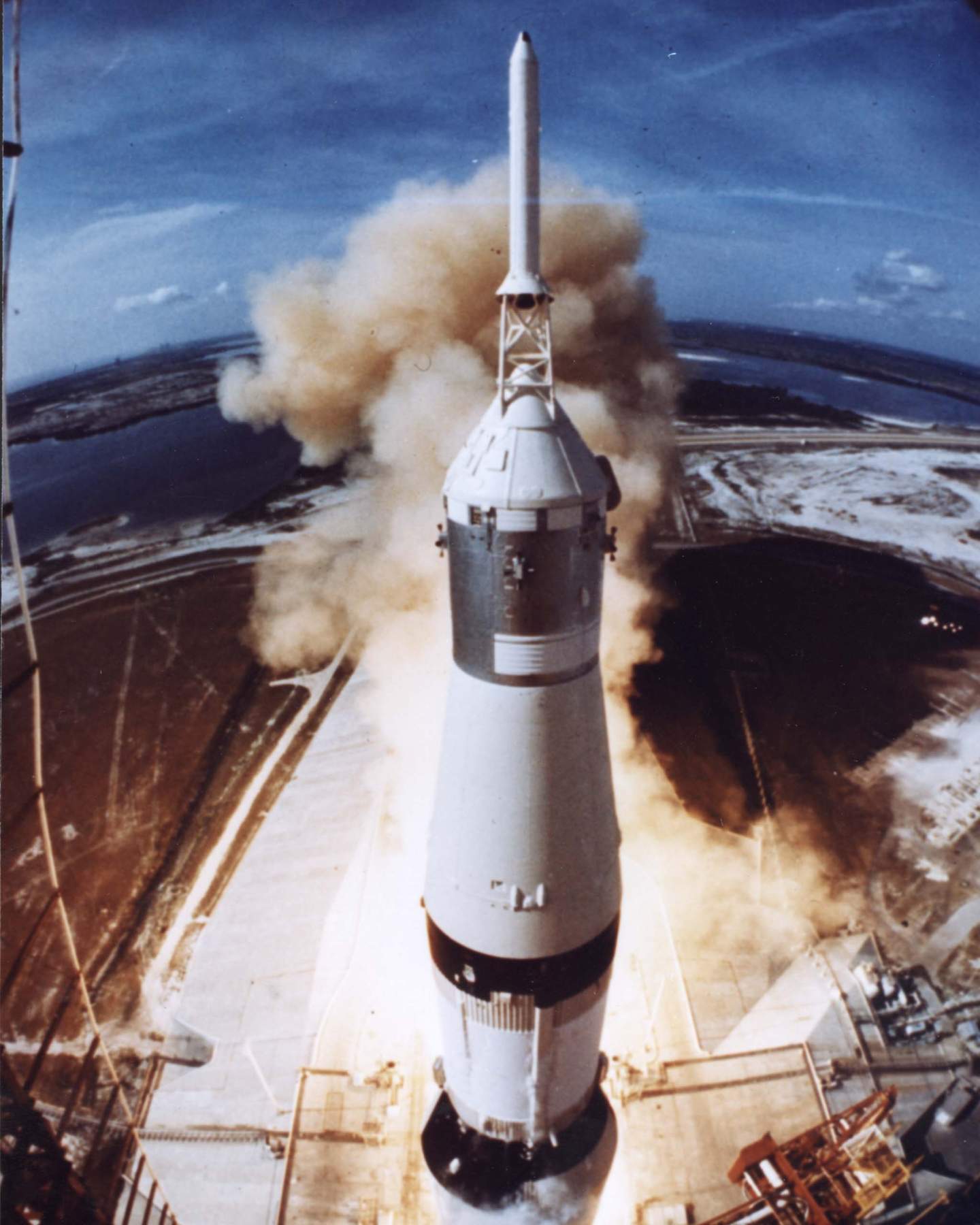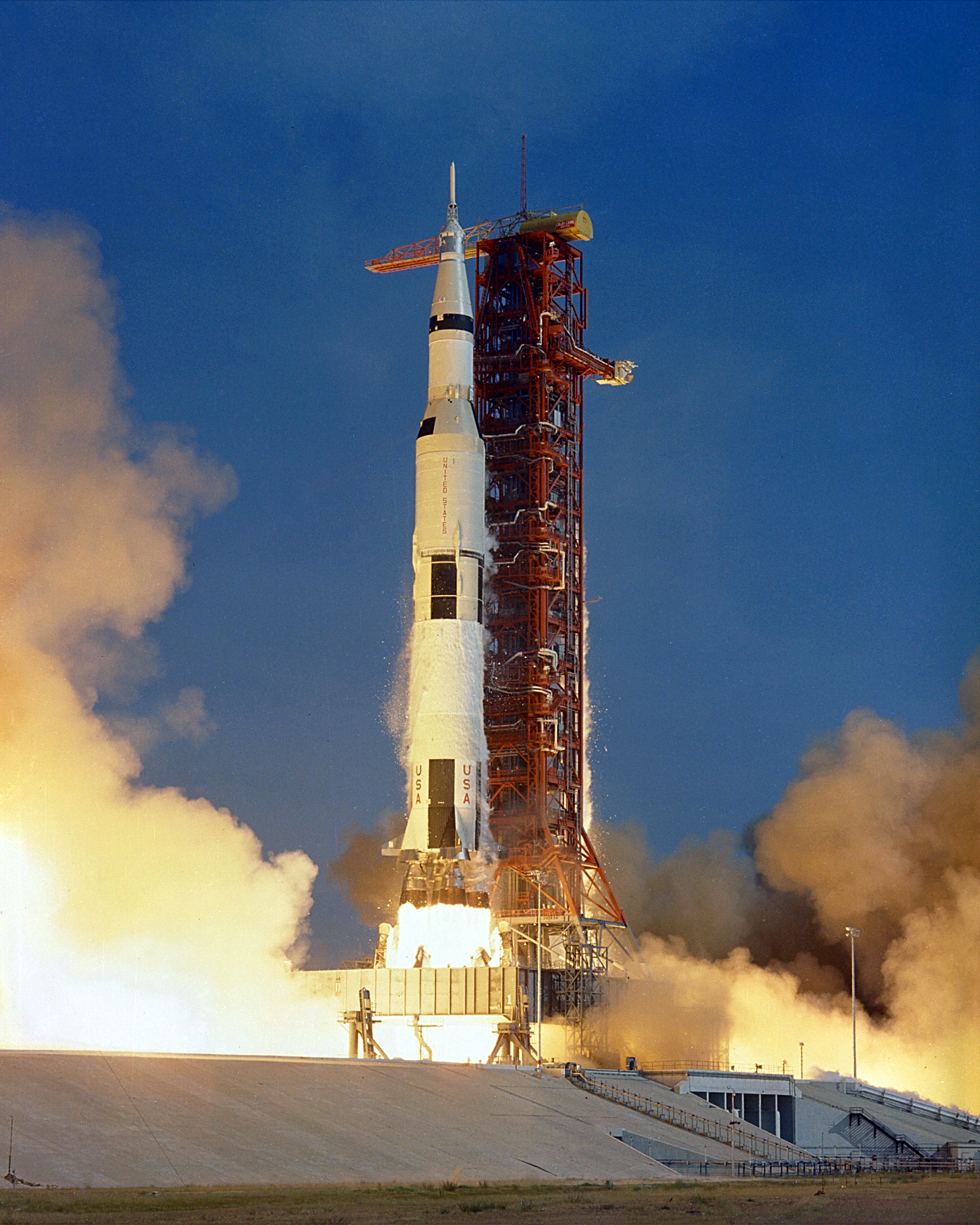
Apollo 11 was the first lunar landing mission for the United States. The mission was executed by the Saturn V rocket, the most powerful rocket (by weight and thrust) ever to be created. (More info about the Saturn V below). The Apollo 11 astronauts were tasked with landing on the moon and collecting lunar samples from the moon. They were also tasked with extensive photography of the moon.They also had television cameras with them to stream what they saw back to the Earth for people at Nasa and the rest of the United States and the world to see.The launch and mission in general were extremely successful as everything went almost exactly to the flight plan of the mission.


“Saturn V.”]
[Howell, Elizabeth.]
[Loff, Sarah]

Saturn V statistics
The Saturn V Rocket was 363 feet tall (36 stories), which is taller than the Statue of Liberty. When fully fueled, the Saturn V weighed over 6.2 million pounds or approximately 400 elephants. The Saturn V also included two smaller rockets with the "Saturn" name. Saturn IB and Saturn 1 were both used later once the Saturn V was dispatched into space after launch. The extreme size of the Saturn V rocket was created to surpass the gravitational pull of the Earth and to reach the moon. Though the Saturn V Rocket was most commonly used for Apollo 11, it was also used for Apollo 8. Apollo 8 was a smaller test mission which only orbited the moon. The last Saturn V rocket was launched in 1973, without anyone on-board, which helped establish space station around the Earth.

[“Apollo 11 Moon Landing Infographic Poster]
[“Apollo 11 Lauch.”'
The video above is the live footage of Apollo 11 taking off at the Kennedy Space Center on July 16, 1969. The image to the right is a visual of the Saturn V rocket.